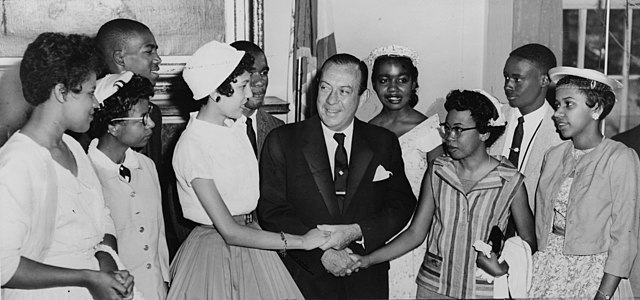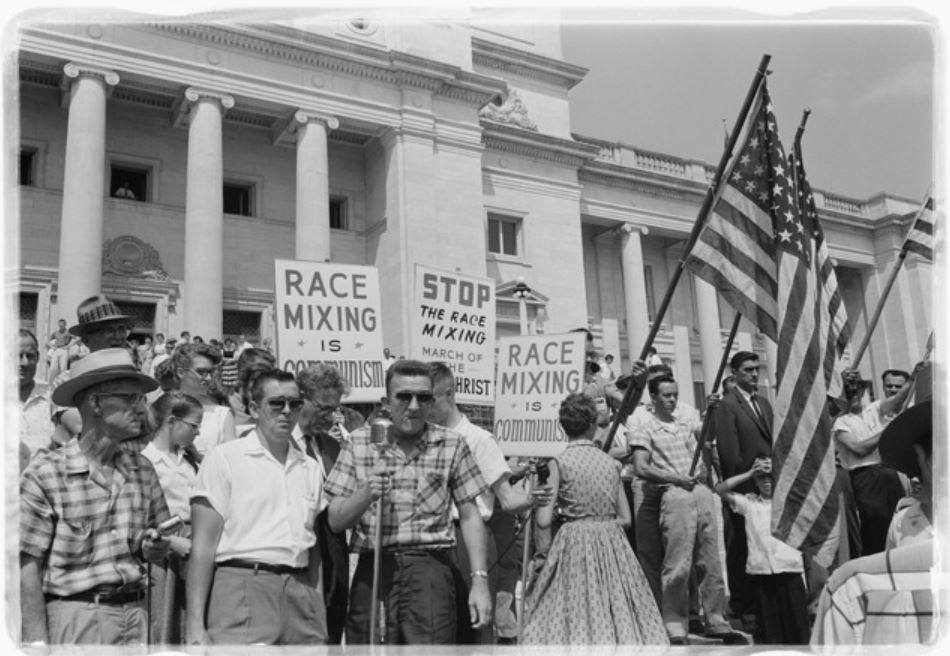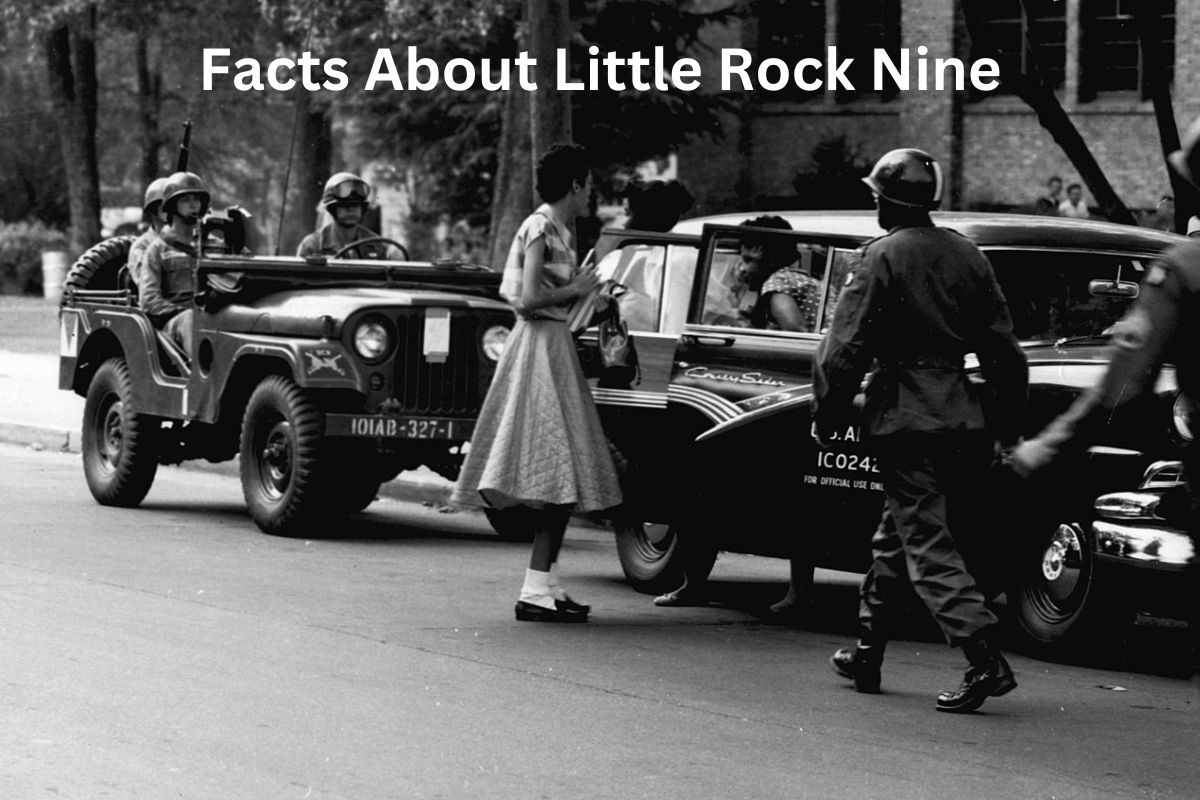The Little Rock Nine were a group of African American students who played a significant role in the desegregation of Little Rock Central High School in Arkansas during the civil rights movement.
Their courageous actions in 1957 challenged racial segregation in education and drew national attention to the struggle for equal rights.
Despite facing hostility, violence, and ongoing discrimination, the Little Rock Nine’s determination to access quality education became a pivotal moment in the fight against racial segregation in the United States.
Their legacy continues to inspire and remind us of the importance of equal access to education and the ongoing pursuit of social justice.
Little Rock Nine Facts
1. The Little Rock Nine refers to a group of African American students who were the first to integrate Little Rock Central High School in Little Rock, Arkansas, in 1957
The Little Rock Nine were a group of African American students who played a pivotal role in the desegregation of Little Rock Central High School in Arkansas.
Also Read: Facts About the Montgomery Bus Boycott
In 1954, the landmark Supreme Court case Brown v. Board of Education ruled that racial segregation in public schools was unconstitutional. However, the implementation of this ruling faced resistance in many parts of the United States, including Little Rock.
2. The group consisted of nine students
The nine students who comprised the Little Rock Nine were carefully selected based on their academic achievements, character, and ability to handle the challenges they would face.
The group included:
- Ernest Green
- Elizabeth Eckford
- Jefferson Thomas
- Terrence Roberts
- Carlotta Walls LaNier
- Minnijean Brown Trickey
- Gloria Ray Karlmark
- Thelma Mothershed Wair
- Melba Pattillo Beals
These students were pioneers in the fight against racial segregation in education.

3. The integration of Little Rock Central High School was a significant event during the civil rights movement
On September 4, 1957, the Little Rock Nine attempted to enter Little Rock Central High School for their first day of classes. However, they were met with a hostile and violent mob of white protesters who opposed the integration of the school.
Also Read: The Freedom Riders Facts
This event gained widespread media attention, highlighting the deep racial tensions and resistance to desegregation in the country. The images of the students facing an angry mob became iconic symbols of the struggle for civil rights.
The events at Little Rock Central High School became a turning point in the fight for racial equality and sparked national and international outrage.
4. The students faced immense hostility and resistance from white segregationist groups and many white students
The Little Rock Nine faced intense hostility and racism from white segregationist groups, as well as from many white students and even some teachers within the school. They endured verbal abuse, threats, and physical violence on a daily basis.
The students were subjected to racial slurs, spitting, and even had objects thrown at them. They were constantly harassed and isolated, making it extremely challenging for them to focus on their education.
5. On their first day of school, on September 4, 1957, they were met by an angry mob of white protesters
The day the Little Rock Nine attempted to enter the school, they were initially denied entry by the Arkansas National Guard, which had been ordered by Governor Orval Faubus to prevent their integration. President Dwight D.
Eisenhower, concerned about the defiance of federal law, intervened by federalizing the National Guard and ensuring the protection and admission of the students.
However, even with the presence of federal troops, the students still faced significant resistance and were often confined to certain areas of the school for their safety.

6. President Dwight D. Eisenhower intervened by federalizing the Arkansas National Guard and deploying U.S. Army troops
The deployment of federal troops to enforce the integration of Little Rock Central High School marked a significant moment in the history of the civil rights movement.
It was one of the first instances where the federal government directly intervened to enforce desegregation in the face of staunch opposition from state authorities.
Eisenhower’s actions sent a powerful message that the federal government was committed to upholding the rights of African American citizens and dismantling racial segregation in public institutions.
The involvement of the military also underscored the severity of the situation and the determination to ensure the safety and well-being of the Little Rock Nine.
7. Despite the presence of federal troops, the students still faced ongoing harassment and discrimination within the school
Despite the presence of federal troops, the Little Rock Nine faced ongoing discrimination, isolation, and hostility within the school.
White students largely ignored or shunned them, and some teachers treated them unfairly or refused to provide them with the same educational opportunities as their white counterparts.
The students endured a hostile and unwelcoming environment, making it incredibly challenging for them to learn and thrive academically.
8. Ernest Green became the first African American student to graduate from Little Rock Central High School in 1958
Ernest Green, the eldest member of the Little Rock Nine, became the first African American student to graduate from Little Rock Central High School in 1958. This was a significant milestone, symbolizing the successful integration of the school.
Despite the challenges they faced, other members of the group, such as Elizabeth Eckford, Jefferson Thomas, and Terrence Roberts, also persisted and eventually graduated from the school.
However, due to ongoing harassment and threats, some of the students, including Minnijean Brown Trickey and Melba Pattillo Beals, had to transfer to other schools to complete their education.
9. The courage and resilience demonstrated by the Little Rock Nine played a significant role in advancing the cause of desegregation and civil rights in the United States
The courage and resilience demonstrated by the Little Rock Nine had a profound impact on the civil rights movement. Their bravery and determination to access equal education rights drew national and international attention to the injustices of racial segregation.
Their actions inspired countless individuals and activists to join the fight against discrimination and played a pivotal role in advancing the cause of civil rights in the United States. The Little Rock Nine became iconic figures and symbols of courage and strength in the face of adversity.
10. The Little Rock Nine received numerous honors and recognition for their bravery and contributions to the civil rights movement
In recognition of their historic contributions, the Little Rock Nine received numerous honors and accolades. In 1999, they were collectively awarded the Congressional Gold Medal, the highest civilian honor in the United States.
The ceremony held in their honor acknowledged their bravery and sacrifice in challenging segregation and striving for equality in education.
The legacy of the Little Rock Nine continues to be celebrated and remembered, serving as a reminder of the ongoing struggle for civil rights and the importance of standing up against injustice. Their story remains an integral part of American history and is taught in schools across the country.
